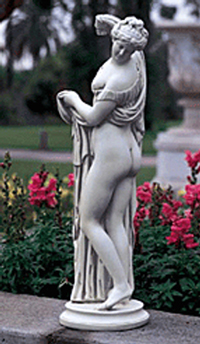pyg-, pygo-, -pyga, -pygia
(Greek: rump, bottom; rear end; behind part; the posterior or back part of the body)
Callipygian Venus
Venus, thought to be more beautiful than any mortal woman, is a sculpture called Callipygian, meaning "of the beautiful bottom" or "of the beautiful backside". The late Hellenistic original once stood at the center of a pool in Nero’s Domus Aurea in Rome.


hypopygial
In entomology, situated under the end of the adomen.
hypopygium
macropygia
An excessively large rear-end or back-side.
ovopygian
Having elongated or ovid buttocks.
phgobranchious
planopygian
Having flat buttocks.
platypygous
Having broad buttocks.
pleopygian
Having bulging buttocks.
pygal (adjective), more pygal, most pygal
Of or pertaining to the rump or hind quarters of an animal.
Outdated, soreness in the buttocks, i.e., a pain in the rump: Janet read that there were various reasons for pygalgia, or the suffering in the gluteus maximus, including an injury, a nerve compression, and overuse conditions.
Pygalgia is related to proctalgia, or pain in the rectum.
pygephanous
Showing or revealing one's bare buttocks in some public situation; "mooning".
pygia
A reference to buttocks.
pygidial (adjective), more pygidial, most pygidial
Characteristic of the back region of certain invertebrates.
1. The posterior or back part of the body in certain invertebrates, primarily insects, crustaceans, and worms, when forming a distinct segment or division.
2. Etymology: from New Latin which came from Greek pugidion; from puge, "rump".
2. Etymology: from New Latin which came from Greek pugidion; from puge, "rump".

